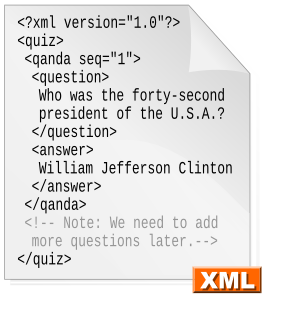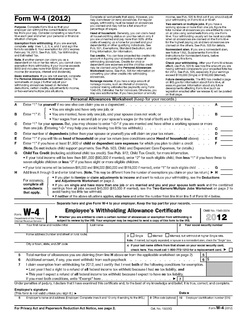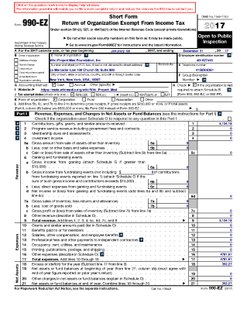Modernized e-File (MeF) is an electronic system for filing tax returns with the Internal Revenue Service (IRS) of the United States.
Tax returns in the United States are reports filed with the Internal Revenue Service (IRS) or with the state or local tax collection agency containing information used to calculate income tax or other taxes. Tax returns are generally prepared using forms prescribed by the IRS or other applicable taxing authority.

The Internal Revenue Service (IRS) is the revenue service of the United States federal government. The government agency is a bureau of the Department of the Treasury, and is under the immediate direction of the Commissioner of Internal Revenue, who is appointed to a five-year term by the President of the United States. The IRS is responsible for collecting taxes and administering the Internal Revenue Code, the main body of federal statutory tax law of the United States. The duties of the IRS include providing tax assistance to taxpayers and pursuing and resolving instances of erroneous or fraudulent tax filings. The IRS has also overseen various benefits programs, and enforces portions of the Affordable Care Act.

The United States of America (USA), commonly known as the United States or America, is a country comprising 50 states, a federal district, five major self-governing territories, and various possessions. At 3.8 million square miles, the United States is the world's third or fourth largest country by total area and is slightly smaller than the entire continent of Europe's 3.9 million square miles. With a population of over 327 million people, the U.S. is the third most populous country. The capital is Washington, D.C., and the largest city by population is New York City. Forty-eight states and the capital's federal district are contiguous in North America between Canada and Mexico. The State of Alaska is in the northwest corner of North America, bordered by Canada to the east and across the Bering Strait from Russia to the west. The State of Hawaii is an archipelago in the mid-Pacific Ocean. The U.S. territories are scattered about the Pacific Ocean and the Caribbean Sea, stretching across nine official time zones. The extremely diverse geography, climate, and wildlife of the United States make it one of the world's 17 megadiverse countries.
The MeF system describes tax forms in terms of XML and supports web-based filing. Modernized e-File was originally introduced in 2004, exclusively for corporate tax returns. Initially, there was only support for Form 1120 and related forms, but each year additional corporate tax forms were supported. [1]

Extensible Markup Language (XML) is a markup language that defines a set of rules for encoding documents in a format that is both human-readable and machine-readable. The W3C's XML 1.0 Specification and several other related specifications—all of them free open standards—define XML.
Beginning with tax year 2009, the IRS will extend the Modernized e-File program to cover the 1040 series of forms for income tax returns filed by individuals. [1] [2] The IRS expects to accept the first MeF-based individual income tax filings in 2010. [1] [3] In the initial phase, MeF for individual returns will support form 1040, schedules A, B, C, D, E, EIC, M, R, SE, as well as the additional forms 1099-R, 2106, 2210, 2441, 4562, 4868, 8283, 8812, 8829, 8863, 8880, 8888, and W-2. [1] XML schemas for Form 1040 MeF are available on the IRS web site.

A fiscal year is the period used by governments for accounting and budget purposes, which varies between countries. It is also used for financial reporting by business and other organizations. Laws in many jurisdictions require company financial reports to be prepared and published on an annual basis, but generally do not require the reporting period to align with the calendar year. Taxation laws generally require accounting records to be maintained and taxes calculated on an annual basis, which usually corresponds to the fiscal year used for government purposes. The calculation of tax on an annual basis is especially relevant for direct taxation, such as income tax. Many annual government fees—such as Council rates, licence fees, etc.—are also levied on a fiscal year basis, while others are charged on an anniversary basis.

Form 1040 is one of three IRS tax forms used for personal (individual) federal income tax returns filed with the Internal Revenue Service (IRS) by United States residents for tax purposes.

In the United States, Form 1099-R is a variant of Form 1099 used for reporting on distributions from pensions, annuities, retirement or profit sharing plans, IRAs, charitable gift annuities and Insurance Contracts. Form 1099-R is filed for each person who has received a distribution of $10 or more from any of the above.



